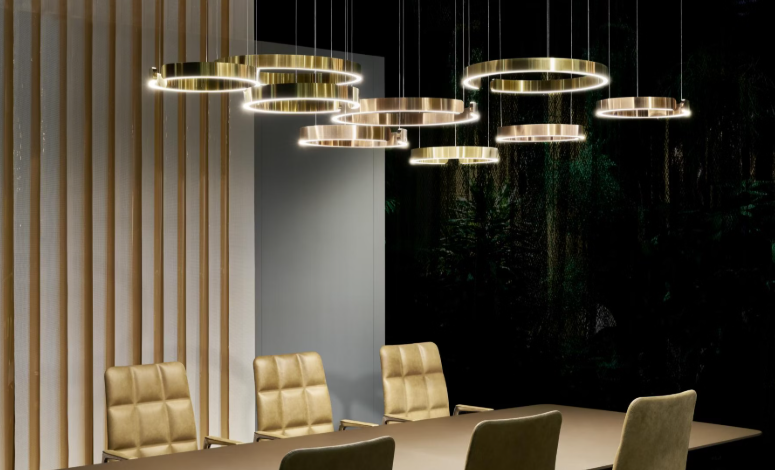How Reliable Lighting Components Shape Modern Illumination Projects

Lighting has evolved from a simple utility to a key part of design, efficiency, and sustainability. Across industries, the focus has shifted toward systems that deliver consistent brightness, lower energy use, and long life. Architects, designers, and project managers now look beyond basic illumination, seeking reliability in every component that powers their spaces. This demand for dependable performance has pushed the lighting industry toward higher manufacturing standards and smarter technologies.
The Shift in Lighting Standards
In today’s commercial and residential markets, expectations for lighting performance continue to rise. Businesses want illumination that enhances visibility while reducing energy consumption. Consumers expect longer-lasting solutions that support eco-friendly goals. This change in mindset has led manufacturers to rethink their processes, materials, and technologies. The result is a new generation of lighting systems designed for durability and consistency.
Energy-efficient lighting is no longer a trend. It is a requirement for most new projects. From retail displays to outdoor architecture, uniform light output and stable operation define quality. These factors depend heavily on how the components are designed, produced, and tested before they reach installation.
The Role of Precision Manufacturing in LED Development
LED technology has become the backbone of modern lighting projects. Its success depends on precision at every stage of production. A professional led strip lights manufacturer must ensure that each unit delivers exact brightness, accurate color, and thermal stability. Even small variations can affect the final look of a space or reduce the lifespan of an installation.
Manufacturers that invest in advanced production lines and strict testing processes help maintain uniform performance across every batch. This reliability allows designers to plan complex lighting layouts with confidence, knowing that every strip will perform as expected. Consistency in LED quality also reduces maintenance costs and system downtime.
Beyond production, design flexibility matters. LEDs must adapt to different surfaces, shapes, and power configurations. Reliable manufacturers provide a wide range of options that suit interior, exterior, and industrial applications. This versatility supports innovation and ensures the lighting design aligns with project goals.
Understanding Power Integration in Lighting Systems
The performance of any lighting system depends not only on LEDs but also on the power behind them. Without stable and efficient energy delivery, even the best lighting components can fail to reach their potential. This is where dependable LED Power Supply suppliers play a key role.
A power supply must match the voltage and current requirements of the LED system. It controls flicker, maintains color consistency, and protects components from sudden surges or voltage drops. Suppliers who specialize in power systems understand how precise regulation enhances light quality and extends product lifespan.
When selecting a power source, engineers look for features like heat resistance, overload protection, and energy conversion efficiency. These elements ensure that lighting systems run smoothly even in demanding environments such as warehouses, outdoor structures, and large commercial spaces.
See also: How to Use Sans Fonts for Clean and Modern Design
Choosing Reliable Components for Large-Scale Projects
Every successful lighting project starts with dependable components. Before choosing products, project planners evaluate several factors including certification standards, thermal management, and compatibility between strip lights and power supplies. Poorly matched components can cause light variation, shorter life, or system instability.
For large installations, uniformity is essential. A single weak connection can compromise an entire section of lighting. To avoid such issues, professionals often rely on brands known for rigorous testing and reliable after-sales support. Consistent quality in materials and assembly reduces maintenance needs and improves long-term cost efficiency.
Environmental conditions also affect performance. Moisture, dust, and temperature fluctuations can damage sensitive components. Selecting products designed for protection and stability ensures uninterrupted performance across diverse settings.
Future Trends in Lighting Technology
The lighting industry continues to move toward greater efficiency and intelligence. Smart lighting systems now connect with automation networks to adjust brightness, color, and timing based on user needs or ambient conditions. This shift combines design flexibility with energy management, allowing users to control both aesthetics and power usage in real time.
Modular lighting systems are also gaining popularity. They allow easy expansion and replacement without complete reinstallation. This adaptability suits industries that prioritize sustainability and cost control. Meanwhile, advancements in power technology are reducing energy waste, making lighting solutions more environmentally responsible.
Research and development efforts focus on improving material lifespan and color rendering accuracy. These innovations aim to provide consistent performance over years of operation while maintaining minimal energy consumption.
Building Lighting Systems That Last
Reliable lighting depends on the partnership between quality manufacturing and efficient power management. Each component plays a specific role in maintaining brightness, stability, and energy balance. When both are chosen carefully, the result is a system that delivers long-lasting illumination with minimal maintenance.
As lighting continues to evolve, the focus remains on trust and precision. By emphasizing component reliability and technical accuracy, businesses and designers can create systems that perform consistently, conserve energy, and stand the test of time.





